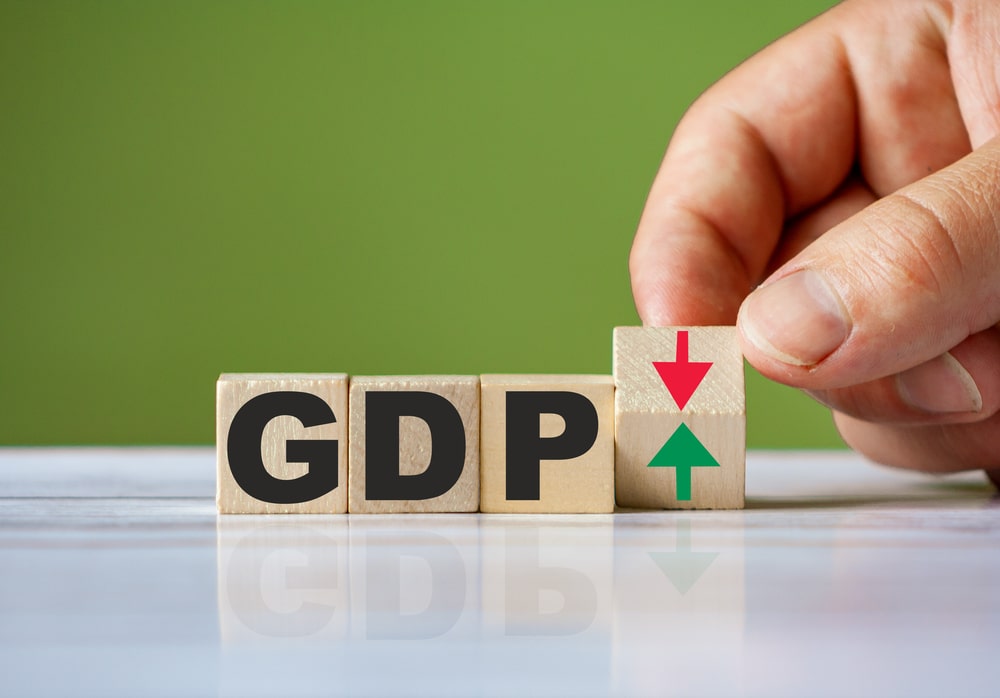
Monetary Policy & Inflation | US

Monetary Policy & Inflation | US
This article is only available to Macro Hive subscribers. Sign-up to receive world-class macro analysis with a daily curated newsletter, podcast, original content from award-winning researchers, cross market strategy, equity insights, trade ideas, crypto flow frameworks, academic paper summaries, explanation and analysis of market-moving events, community investor chat room, and more.
As I expected, GDP surprised on the upside, at 2.4% QoQ SAAR vs consensus 1.8% (Table 1). This is above trend of about 2%.
Final sales to domestic purchasers, which exclude the volatile categories of inventories changes and net exports were up 2.3% QoQ SAAR. Final sales growth has been trending up since mid-2022. In addition, final sales growth was close to GDP, suggesting the pandemic-related large inventories cycles could be over. This is yet another sign of normalizing aggregate supply and demand.
Consumption slowed to 1.6% QoQ SAAR from 4.2% in Q1, but was higher than consensus expectations of 1.2% (Table 2). The main driver of the slowdown was spending normalization: spending on cars contracted following a 45% increase in Q1. H1 2023 over H2 2022 car spending growth annualized was 19%. Non-durable goods and services spending growth moved closer to the trend of about 2%.
By contrast, spending on recreational goods increased by 10%, following a 6% increase in Q1. We must wait until today’s monthly data on personal spending to get the details.
The resiliency of durables consumption is striking considering that it remains well above trend (Chart 2). It is likely to signal household optimism, which is consistent with the strong labour market and rising real wages.
Capex (non-residential fixed investment) rebounded after a weak Q1, driven by a swing in transportation and industrial equipment (Table 1). H1 2023/H2 2022 capex growth was 3.1% SAAR.
Q2 capex spending was consistent with the post-pandemic trends of (Chart 3):
Residential investment contracted at the same pace as in Q1, which is inconsistent with the monthly residential construction and housing starts data showing a recovery (Chart 4). It is likely to be revised up in the next GDP releases.
Government spending on goods and services (spending on transfers is not included in the national accounts) contributed to Q2 growth (Table 4).
Despite the very strong recovery, non-defence Federal government spending remains nearly half a percentage point of GDP above pre-pandemic levels (Chart 5). By contrast, defense and state and local government spending is below pre-pandemic levels, relative to GDP.
At the July FOMC, the Fed upgraded its assessment of growth from ‘modest’ to ‘moderate’. Today’s data is consistent with the upgrade, especially as the FOMC estimate of trend growth is 1.8%.
Also during the presser, Chair Jerome Powell stated that, ‘At the margin, stronger growth could lead, over time, to higher inflation and that would require an appropriate response for monetary policy.’
Because Powell sees the policy stance as already deeply restrictive, the policy response is more likely to come from fewer 2024 rate cuts than additional 2023 rate hikes.
Following the GDP release, the OIS based estimate of the December 2024 Federal Funds Rate (FFR) increased by 14bp to 4.2%, while the Dec 2023 FFR increased by 3bp only.
Yet, the OIS-based December 2024 FFR remains well below my expectation of 5.6%.
Spring sale - Prime Membership only £3 for 3 months! Get trade ideas and macro insights now
Your subscription has been successfully canceled.
Discount Applied - Your subscription has now updated with Coupon and from next payment Discount will be applied.